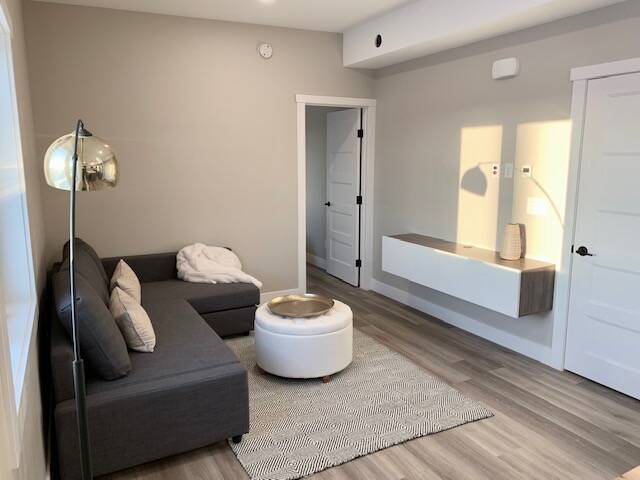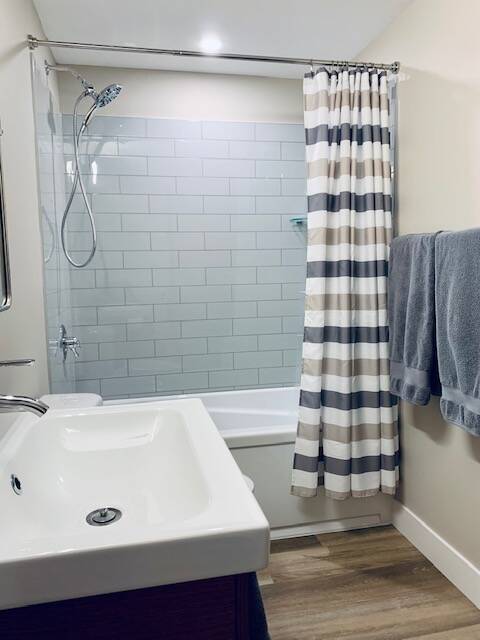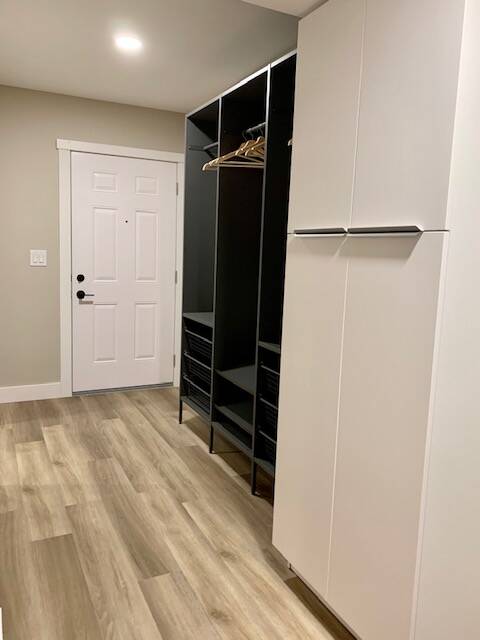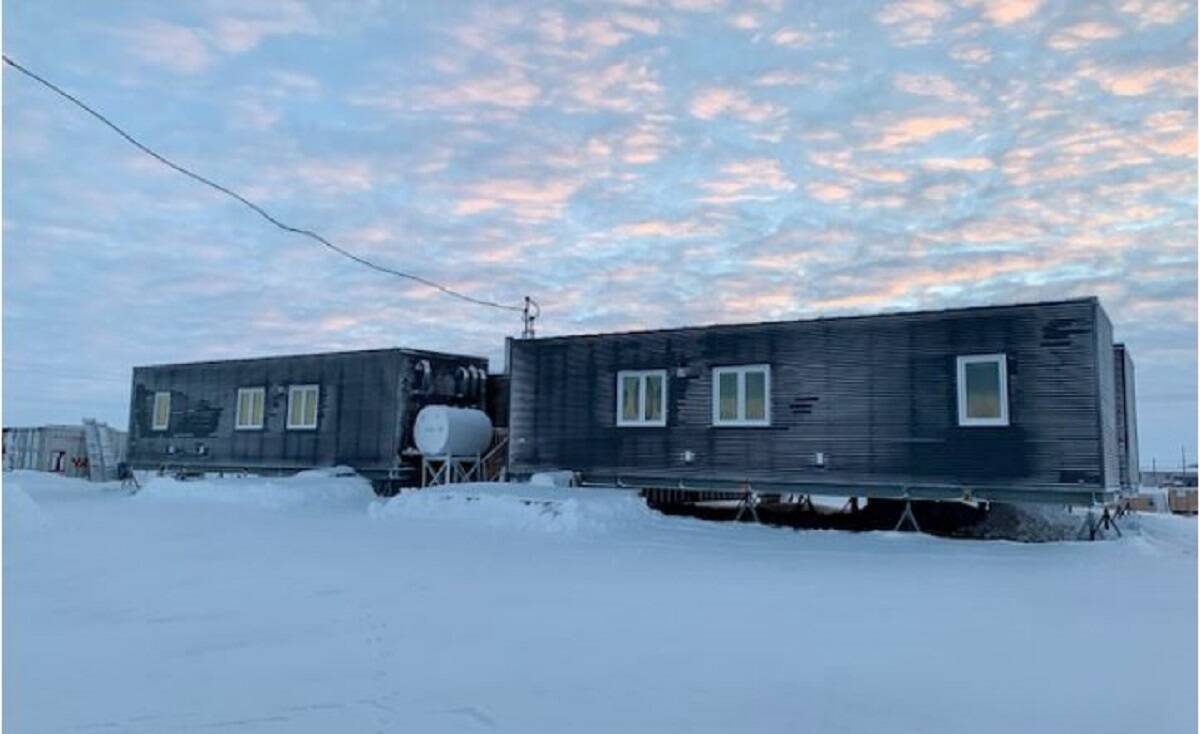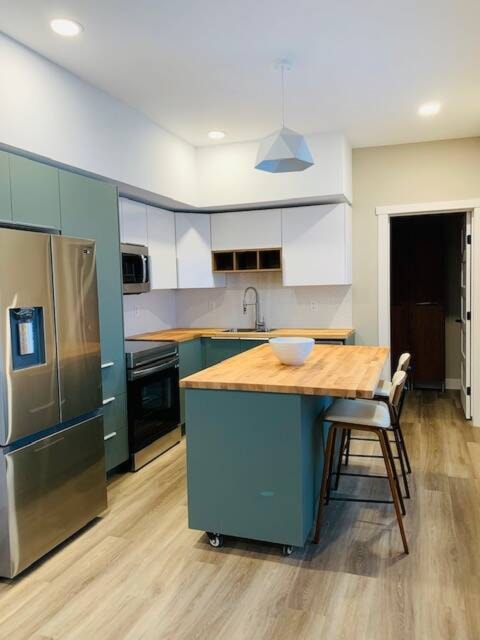Amanda Doiron and Stuart Rostant of CHOU Consulting in Cambridge Bay recount how they established modular housing in the community and share their future plans.
Doiron: So far we’ve worked with local carpenters. Our long term vision is to have a training facility where we would be manufacturing these housing pods from down south, with a training component. Students could come there and learn how to do the insulation, mechanical, plumbing, electrical and carpentry. We tend to always fly southern people up, but why aren’t we flying Northerners down on rotations? If people enjoyed their work terms, they can go back to their communities and be the representative, be the installer. Help the company’s achieve its goal, to tailor housing to the North.
Rostant: We get questioned on that a lot. If we build a factory down south, all the money stays there in terms of labor and resources, which is true, but at the end of the day NU3000 says they want to build 3000 homes in 10 years. That’s impossible — we don’t have the resources in the Arctic to even get close to that. You have to look at different ways of building. It’s important that we build that skill set in Nunavut, and we think changing the location of training and production could be a big factor in the solution here.
Another good reason to build modular houses for us, is that at the moment, if you want to build a house in any community in the Arctic, chances are there is no contractor that would do that for you. If there is a contractor, they don’t have a price for the house and chances are it’s going to be a two-year process and you pay whatever it ends up costing at the end. If we’re able to come up with a set design based on modular construction, then anybody can have access to owning a home if they can afford to do so. The risks for the future homeowner are largely reduced.
A challenge in Nunavut, is not only the lack of housing, but also that there is not the infrastructure in place to receive that housing. Getting crushed gravel for example — as simple as that sounds — is an impossibility in most communities. NHC is trying to make it easier for hamlets to surpass zoning barriers for housing because in some communities, project leaders are ready to go and start building homes, but simply have nowhere to put them.
Doiron: Tiny homes are a great idea but they are temporary. You’re given a small space because of the need for housing. It becomes your permanent house and it becomes overcrowded and then it deteriorates. It should be transitional but it’s not because there is nothing else. It ends up failing, because it was never intended to be a forever home, but only a first step towards home ownership.
Future projects
Doiron: Our company was shortlisted by CMHC Northern Supply Challenge along with 33 other participants. Our pitch was, we did this pilot project with a two bedroom home, we are now in the process of making a fourplex. We want to look at the economics of the operation cost, the amount we would have to build to make a profit and make them affordable. Next year we are focusing on submitting to the final application process which adds up to 74 million dollars. The goal is to prove that having a factory in Manitoba (or a couple of them) to be able to build these modular homes for the Arctic is a feasible project. This grant opportunity would reduce our production costs. We could now buy in bulk, we could build during all 12 months of the year, etc. Hopefully we can get enough information to prove that with this opportunity we can lower our costs of production and start supplying homes all over Nunavut.
Rostant: A big barrier to what we are doing is finding an end user to what we build. Home ownership — the cost to construct a home in the Arctic is at a point that it is unaffordable outside of “not-for profit” organizations or the GN.
Doiron: They just canceled 10 units last year because it was unaffordable for them. If it is unaffordable for the GN to build housing, how do they expect the private market to build?
Rostant: I can go to Kugluktuk next year and build homes but who will it be for? Our business is a difficult one because while we want to build more affordably, and we think we are providing a quality product at a reasonable price, a reasonable price in Nunavut is still unaffordable for Nunavummiut. Last year for instance, we built a two-bedroom, two-bathroom, 1,000-square-foot home. It came with land, on a pile foundation, fully furnished, move-in ready and we put it on the market for $460,000, which is pretty much close to cost. Our idea is that we wanted to get first time home ownership being taken seriously and we were willing to put every dollar and cent on the line to see if we can do it. Out of everybody who came in that unit and went to the bank to try and get financed, zero people qualified for a $460,000 home in Cambridge Bay. This kind of unit does not exist at that price anywhere in Nunavut. In the end, a non-profit picked it up and is using it for transitional housing.
This year, everything costs 30-40-50 per cent more based on fuel costs and supply chain, etc. We are at a stage where nobody is going to qualify for a mortgage based on the cost of construction and the interest rates. Unless the government steps in and incentivizes home ownership, our only client is NHC.
Doiron: Right now we have the fourplex for sale on the private market at $1.7 million because we still can’t find an end user. That is sad when we’re in a housing crisis. It’s been sitting there for the last month, unoccupied.
We’d like to get to every community, that’s the goal, but until the government steps in and says public housing is needed, government staff housing is needed, but we also need to invest in our people, we need to give them enough money so that their mortgages are affordable. We will continue to work hard to bring down our prices, which is why we’re coming up with all these solutions. We can do all of this but if you’re not helping them, there is going to be a problem because it’s going to be very hard to crack lower than $460,000 homes.
Rostant: We’re still confident that it’s going to happen, we’re seeing progress. We’re moving forward, we’ve had quality discussions, and we are still optimistic for the future of home ownership in Nunavut. The process can be frustrating at times.
